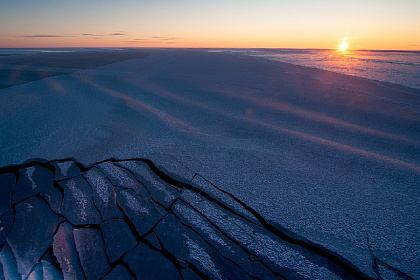A recent study titled “European Energy Balance in the New Reality” by Yakov & Partners concludes that Europe will not be able to make it through the coming winter and 2023 without maintaining gas supplies from the Russian Federation. Otherwise, it will be faced with the risk of a significant economic downturn.
Despite the reports of hitting gas storage targets, Europe has not overcome its reliance on Russian gas. To meet the demand for blue fuel until the end of 2022, European countries will have to maintain gas supplies from Russia, or cut its consumption by an additional 7 to12 billion cubic meters, which will force multiple industries to curtail or suspend their output altogether.
Currently, about 70% of the existing nitrogen fertilizer production capacities in Europe are idle; aluminum output dropped by 25%, steel production has been reduced by 5%, and, as the authors of the study expect, this trend is highly likely to continue even in the event of a mild winter.
European countries have done a lot to diversify their sources of supply. By September, they managed to bring average gas storage levels to 85% by increasing supplies from alternative sources and reducing gas consumption, primarily industrial consumption. LNG imports increased by 30% compared to 2021. However, further increase in the rate of alternative supplies to Russia in 2022 is hampered by logistics, as multiple terminals in the receiving countries are not connected to the pipeline grid.
If Europe sustains reduced consumption and record high LNG imports, and exhausts its underground storage facilities, it would still face shortages of at least 10 billion cubic meters of gas during the 2022/2023 heating season even in the event of a mild winter. Although the U.S. shale industry has vast reserves of oil and natural gas, executives have warned they will not be able to step up supplies fast enough to prevent disruptions during the winter season. At the same time, a potential revival in China’s demand for liquified natural gas, a long or harsh winter, unstable supplies and some other factors could further exacerbate the European energy crunch. Should one or more of those risks materialize, the shortages might climb to 20–30 billion cubic meters. This means European countries will be forced to cut consumption even further, or step up gas imports from Russia.
In the medium term, the efforts of European countries to remove logistical constraints hampering supplies from alternative sources (such as construction of new LNG terminals, integration of isolated gas transmission systems into a pan-European grid, etc.) could yield first results by mid- to late 2023. This means the bloc will be able to process an additional 60 billion cubic meters of gas per year. Yet putting the infrastructure in place will not solve the problem of supply, as LNG producers lack the required spare capacity.
“Slashing Russian gas imports could mean a shortage of 40 to 60 billion cubic meters in 2023 even if European countries keep rationing consumption throughout the entire year. Sixty billion cubic meters is comparable to the annual gas consumption of France and Poland combined, or the total annual gas consumption of such industries as fertilizer production, petrochemistry, ferrous and non-ferrous metallurgy, and the entire machine industry. Stopping production across these industries will affect other industries down the supply chain, from agriculture to the services sector. Consequently, there is no way for Europe to stop using Russian gas without affecting both the economy and households,” warns Elena Kuznetsova, a Partner with Yakov & Partners.
In 2022 the global demand for gas is expected to increase by 50 to 75 billion cubic meters despite the current economic situation. That way, the gap between supply and demand, even regardless of the regional distortions caused by sanctions, will amount to 75 to 125 billion cubic meters. All this spells continued high prices for gas and other energy sources, believes Vlada Bogdanova, Head of the Global Research Center at Yakov & Partners. “If we factor in the available leverage to quickly reduce energy consumption, the deficit in the gas market is likely to run at 5–6%, which will keep the price from falling below USD 800–1,000 per thousand cubic meters,” she said.
You can learn more about the findings of the “European Energy Balance in the New Reality” study here.



